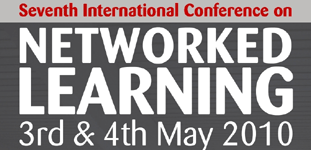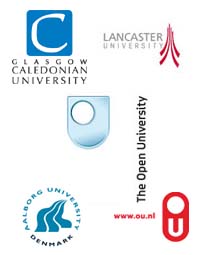

Identifying Mediators of Socio-Technical Capital in a Networked Learning Environment
Daniel Suthers, Kar-Hai Chu
University of Hawaii, Honolulu, HI, United States
Abstract
Online learning environments can do more than support immediate instructional objectives: they can also enable participants to gain value from a network of scholars and resources. Networks of weak ties provide access to potential collaborators and novel information beyond what is available in one’s immediate strong tie circles. These resources for potential action have been termed "bridging social capital". Since the capital in socio-technical networks resides partially in how the technology enables contact between people, it has been called "socio-technical capital." Combining these ideas, we call the weak ties enabled by a technical environment "bridging socio-technical capital".
Inspired by this idea, our software for networked learning, Prometheus, has been designed to support online university level education and teacher professional development under an open community model. In these online environments, a number of people who may have something in common are participating in task-specific workspaces that are embedded in a shared virtual space. Our objective is to design this space to offer affordances for the sharing of something of value between participants beyond the specific instrumental objectives that brought them to the workspaces (e.g., professional development activities or taking a course).
The analysis reported in this paper examines the extent to which people who come to the university environment for instrumental objectives such as taking a course encounter persons or products of others from outside their assigned workspaces. Various digital artifacts available in Prometheus--discussions, resources, user profiles, and wiki pages--are compared in terms of how they support these encounters, which we call "spontaneous associations." Affiliation networks are created and analyzed to characterize and compare spontaneous and preassigned associations.
Results show that there is appreciable bridging across classes and degree programs, but the types of artifacts studied play different roles in mediating bridging socio-technical capital as measured by spontaneous associations. While there is much more activity within wikis and discussions, little of that activity helps users expand beyond their assigned contexts, primarily because discussions and especially wikis are owned by task-specific workspaces with controlled membership. Meanwhile, an appreciable percentage of access to profiles and resources (about a third) are bridging events, but these artifacts support fewer associations and no interaction, which limits their contribution to bridging socio-technical capital.
The results revealed that we need to find ways to make users aware of relevant discussions and especially wikis outside their primary workspaces, and to increase opportunities for interaction around resources and profiles. More generally, this work highlights the importance of looking beyond immediate instructional objectives to design for bridging socio-technical capital in networked learning environments, and offers one approach to identifying how digital objects mediate such capital.
| About NLC | Welcome Messages| Acknowledgwments | Conference Proceedings| Keynote Speakers| Index of Presenting Authors| Contact |